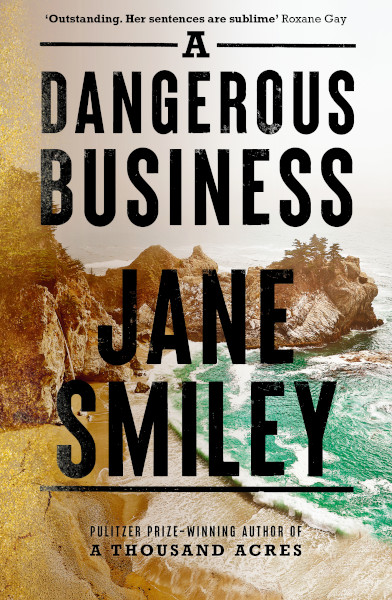Tracking Down a Killer in Jane Smiley’s ‘A Dangerous Business’

A Dangerous Business
By Jane Smiley
Knopf
224 pages
Monterey, California, 1851. Two women, Eliza Ripple and Jean MacPherson, work in different brothels in the city, at some personal risk (“being a woman is a dangerous business,” as one madam, Mrs. Parks, puts it). The perils of life as a prostitute in California’s gold-rush era become alarmingly clear as, one by one, the bodies of murdered sex workers are found in the area.
Jane Smiley, a prolific author and winner of the Pulitzer Prize for her novel, A Thousand Acres, is certainly eclectic in her chosen subject matter. She has ventured far and wide in her fiction, from the wilds of 14th-century Greenland (The Greenlanders) to the “wilds” of academia (Moo) and the intrigues of horse racing (Horse Heaven).

Smiley’s new novel, A Dangerous Business, is no exception to her wide-ranging interests, though the result seems a lesser addition to her oeuvre.
For one thing, there’s a lot of exposition in the opening pages. We learn about Eliza’s late husband, Peter, and how his violent death led her to work in a house of ill repute. We meet several of her clients, men from all walks of life in this frontier outpost. Later, Eliza and Jean undertake their own amateur scrutiny into the killings—aided by a reading of Edgar Allan Poe’s story, “The Murders in the Rue Morgue,” and the investigatory techniques of C. Auguste Dupin, its legendary detective.
The ensuing action, however, takes a long time in coming. At one point, these female sleuths go for a buggy ride around the Monterey peninsula:

“First, they went past the dock and headed up along the bay. Eliza was on the left side, and enjoyed looking out at the curving, pale beaches with the waves of the bay simply lapping, not crashing. The water was blue as blue, since the sun shone from behind the hills. The dunes were interesting, too; Eliza had never seen a dune, though she had heard of them. There were four ships visible in the bay, one apparently heading toward the docks, two heading away from the docks, and one moored, for some reason, perhaps a quarter of a mile out in the water—the sails of that one were down, and Eliza could make out some figures standing on the bow, looking toward the docks.”
While this is evocative of the region, the slackness in some of the phrasing (“water as blue as blue” and “The dunes were interesting” and repeated use of “docks” and “heading”) suggests a lackluster prose that’s unfortunately evident throughout. The novel’s pacing suffers, again due to the leaden exposition.
Scenes with Eliza at her job are rendered in oddly understated language as well. Her interactions with the roughshod clientele seem not especially risky, a bit surprising given the ruffian behavior of the times.

In the end, the mystery behind the serial killings is resolved, but only after Eliza and Jean have taken many long walks and buggy rides, in pursuit of inconclusive leads.
For some readers, A Dangerous Business may fall short of expectations. Uneasily blending historical and crime fiction, Jane Smiley’s novel lacks the urgency of her previous work, and its chief protagonist, Eliza Ripple, isn’t compelling enough to carry the story on her own.
Author Bio:
Lee Polevoi, Highbrow Magazine’s chief book critic, is the author of a new novel, The Confessions of Gabriel Ash, coming in May.
For Highbrow Magazine
Image Sources:
--PublicDomainPictures (Pixabay, Creative Commons)
--Judith Scharnowski (Pixabay, Creative Commons)
--GDJ (Pixabay, Creative Commons)
--Knopf






























































































































































































































































































































